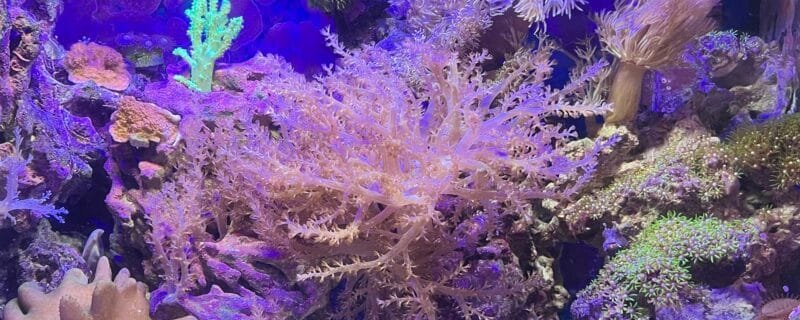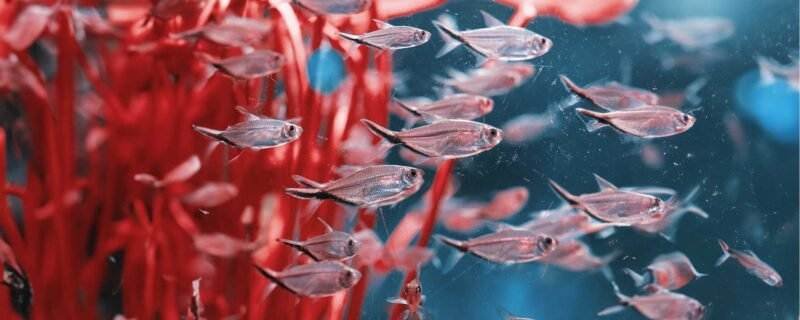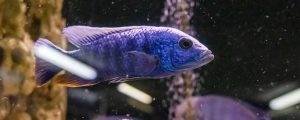The Red-tailed Black Shark is one of the most visually stunning freshwater aquarium fish available today. With its jet-black body contrasted by a brilliant crimson tail, it brings a unique and dynamic presence to any tank. Despite its name, this fish isn’t a true shark — it gets its name from its shark-like dorsal fin and sleek, torpedo-shaped body.
Once common in its native Thailand, the Red-tailed Black Shark is now considered critically endangered in the wild due to habitat loss. Thankfully, it thrives in captivity and remains a popular choice among intermediate and experienced aquarists who appreciate its energy and territorial personality.
Native Habitat
The Red-tailed Black Shark originates from the Chao Phraya River Basin in central Thailand. In the wild, it inhabited clear freshwater streams and rivers with rocky or sandy substrates and dense vegetation. Seasonal flooding created a dynamic environment with varying water flow, which these fish were well adapted to.
Unfortunately, dam construction, water pollution, and agricultural expansion have drastically reduced its natural range. Today, most Red-tailed Black Sharks in the aquarium trade are captive-bred.
Size and Lifespan
Adult Red-tailed Black Sharks typically reach 4 to 6 inches (10–15 cm) in length, though some can grow slightly larger in spacious tanks.
With proper care and stable water conditions, they can live up to 8–10 years, and occasionally longer in well-maintained aquariums.
Diet
These fish are omnivores, eating a varied diet of plant and animal matter. In the wild, they feed on algae, insect larvae, small crustaceans, and detritus.
In captivity, they thrive on:
-
High-quality sinking pellets or wafers
-
Frozen or live foods like bloodworms, daphnia, or brine shrimp
-
Blanched vegetables such as zucchini, cucumber, and spinach
-
Occasional algae wafers for variety
A balanced diet ensures vivid coloration and healthy growth.
Sexing
Sexing Red-tailed Black Sharks is notoriously difficult, especially when they are young.
-
Females tend to be slightly larger with rounder, fuller bellies.
-
Males are usually slimmer and may display more intense coloration, particularly during breeding attempts.
However, without a group for comparison, even experienced aquarists find it challenging to distinguish between the sexes.
Breeding
Breeding the Red-tailed Black Shark in home aquariums is extremely rare and difficult. Most breeding success occurs only in large-scale commercial hatcheries where hormone induction is used.
The main challenges include:
-
Difficulty in sexing
-
Strong territorial aggression (often leading to injuries)
-
Specific environmental triggers that are hard to replicate
In nature, they are egg scatterers, depositing eggs in dense vegetation or rocky crevices. If eggs are successfully laid in captivity, parents may eat them, so a separate breeding setup is necessary.
Water Conditions
To keep your Red-tailed Black Shark healthy and thriving, stable water parameters are essential.
Ideal Conditions:
-
Temperature: 72–79°F (22–26°C)
-
pH: 6.5–7.5
-
Hardness: 5–15 dGH
-
Tank Size: Minimum of 55 gallons, larger if housing multiple territorial fish
They prefer well-oxygenated water with good flow, mimicking their riverine origins. A canister or internal filter with strong circulation is recommended.
Ease of Care
Difficulty Level: Moderate to Intermediate
Red-tailed Black Sharks are hardy but require careful tank management due to their territorial nature. They thrive best when given plenty of space, hiding spots, and visual barriers to reduce aggression.
They are excellent for aquarists with some experience managing semi-aggressive species.
Tank Mates and Community Compatibility
The Red-tailed Black Shark can be both territorial and solitary, especially as it matures. Juveniles are often peaceful, but adults fiercely guard their territory, particularly against similar-looking or bottom-dwelling fish.
Good tank mates include:
-
Barbs (Tiger, Rosy, or Cherry Barbs)
-
Rainbowfish
-
Larger Tetras (Congo, Bleeding Heart)
-
Loaches (Yoyo or Clown Loach)
Avoid:
-
Other Red-tailed Black Sharks or similar species like the Rainbow Shark (Epalzeorhynchos frenatum)
-
Slow-moving or long-finned fish (Angelfish, Bettas)
-
Small or timid species
To reduce aggression, provide plenty of hiding spots using driftwood, rocks, and dense plants.
Species Variations
While there are no natural subspecies of the Red-tailed Black Shark, selective breeding has produced a few notable variations:
Albino Red-tailed Black Shark
The Albino Red-tailed Black Shark retains the same body shape and tail color but features a creamy white to golden body and red or pink eyes. This variety is less common but equally striking.
Care requirements are identical to the standard variety, though albino individuals can be slightly more sensitive to bright lighting and stress.
Related Species
-
Rainbow Shark (Epalzeorhynchos frenatum) – Similar in shape but with a grey body and red fins. Less aggressive and slightly smaller.
-
Flying Fox (Epalzeorhynchos kalopterus) – Often confused with algae eaters; peaceful and more sociable.
Common Health Concerns
Red-tailed Black Sharks are generally hardy but can suffer from:
-
Ich (White Spot Disease): Treat early with temperature increase and aquarium-safe medication.
-
Fin Rot: Prevented by maintaining clean water and reducing stress.
-
Aggression-related injuries: Common if the tank is too small or lacks hiding spaces.
A well-filtered, stable tank with a balanced diet minimizes health issues.
FAQs
1. Can Red-tailed Black Sharks live with other sharks?
It’s not recommended. These fish are highly territorial, especially with similar species such as Rainbow Sharks or other Red-tailed Blacks. Aggression often results in serious injury or death.
2. How often should I feed my Red-tailed Black Shark?
Feed them once or twice daily, offering only what they can consume within two to three minutes. Overfeeding can lead to obesity and poor water quality.
3. Why is my Red-tailed Black Shark chasing other fish?
This behavior is territorial. Ensure the tank is large enough (55+ gallons) and provide hiding spots to break the line of sight between fish.
Conclusion
The Red-tailed Black Shark (Epalzeorhynchos bicolor) is a magnificent freshwater species admired for its bold appearance and strong personality. While its territorial behavior requires thoughtful tank planning, it rewards aquarists with dynamic movement and vibrant contrast. With proper space, compatible tank mates, and stable water conditions, this iconic fish can thrive for many years — becoming the star of your aquarium.





